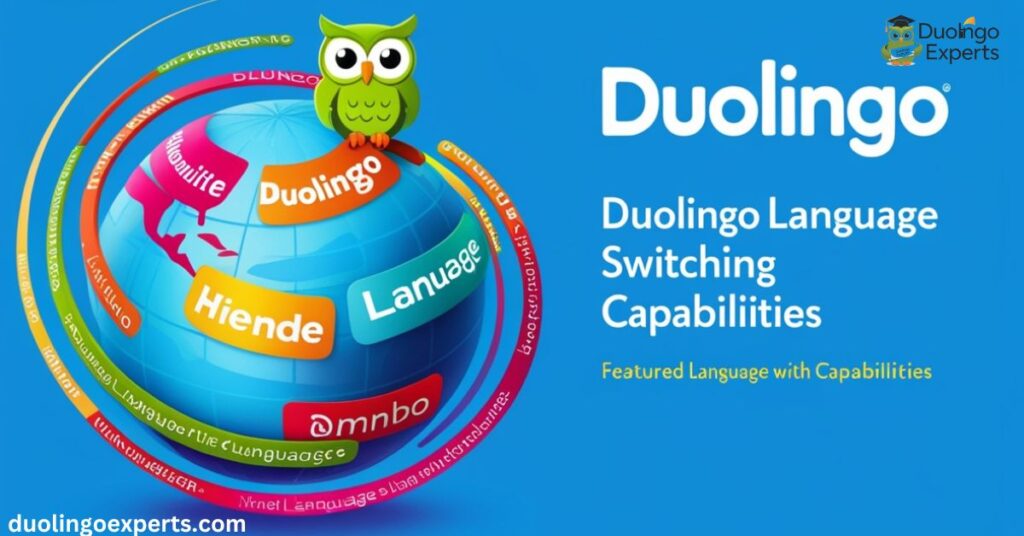In a world that’s increasingly globalized, the ability to speak more than one language is an invaluable skill. It opens doors to better career opportunities, deeper cultural understanding, and the ability to communicate with people from diverse backgrounds. Among the many language learning tools available today, Duolingo has become one of the most popular platforms. But the question remains: is learning multiple languages at once on Duolingo truly possible? Can it help you master several languages simultaneously without feeling overwhelmed?
The answer, in short, is yes! With its user-friendly interface, motivating game-like features, and robust support for multiple languages, Duolingo offers the perfect platform for those looking to master multiple languages. However, the process is not without its challenges. Let’s dive deep into understanding how Duolingo enables multilingual learning and how you can maximize the app to become proficient in more than one language.
The Brain’s Remarkable Ability to Learn Multiple Languages
Before we delve into how Duolingo helps in learning multiple languages, it’s essential to understand how the brain processes language. Our brains have an amazing ability to adapt and learn new things, including languages. When you learn a new language, you’re essentially training your brain to recognize new sounds, words, and grammar structures. But can the brain handle learning multiple languages at once? Let’s explore the cognitive science behind it.
Cognitive Benefits of Learning Multiple Languages
The science of multilingual learning suggests that learning multiple languages is more than just acquiring vocabulary—it actually boosts your brain’s cognitive abilities. Research has shown that being multilingual can improve memory retention, enhance problem-solving skills, and increase mental flexibility. Here are some key cognitive benefits of learning multiple languages:
- Improved Memory and Retention: Learning and retaining vocabulary and grammar rules for several languages simultaneously can significantly improve your memory. Studies show that people who speak more than one language tend to have better memory retention overall.
- Enhanced Problem-Solving Abilities: The act of switching between languages strengthens your brain’s working memory and decision-making skills. Multilinguals are known to be better at thinking critically and solving problems, as the brain is constantly juggling multiple cognitive tasks.
- Better Multitasking: When you learn multiple languages, your brain gets used to handling multiple linguistic systems. This boosts multitasking abilities and can make it easier for multilingual individuals to focus and switch between tasks.
- Increased Mental Flexibility: As you learn to switch between languages, your brain becomes more adept at adjusting to new information. This mental flexibility allows you to process and adapt to different environments, be it in work, travel, or even social settings.
- Delayed Onset of Dementia: Studies have shown that learning multiple languages can delay the onset of dementia and Alzheimer’s disease. This is because multilingual individuals tend to have better brain health overall due to constant brain exercise.
How Your Brain Juggles Multiple Languages
When learning more than one language, your brain doesn’t treat each language as entirely separate. In fact, it starts to build connections between them. This process, known as language interdependence, is when a learner applies knowledge from one language to help learn another. For example, if you’re learning French and Spanish, your brain can draw upon similar vocabulary and grammatical structures, making learning easier.
However, there is also the risk of language interference, especially when languages are similar. The brain may confuse words or syntax, which is why it’s important to maintain a balanced and organized study routine when learning multiple languages.
Working Memory and Language Switching
One of the key challenges in learning multiple languages is effectively switching between them. Our working memory—which refers to the system responsible for holding information temporarily while performing cognitive tasks—plays a crucial role in language switching. Bilinguals and polyglots are able to switch between languages effortlessly, as their working memory has been trained to handle linguistic transitions.
Duolingo can help you optimize this process. The app is designed to reduce the cognitive load by structuring lessons in a way that reinforces what you’ve learned, making it easier for your brain to switch between languages smoothly.
Can You Learn More Than One Language on Duolingo? Step by Step Guide

Now that we’ve discussed how the brain handles learning multiple languages, let’s explore how Duolingo facilitates the process. You might be wondering, “Can you learn more than one language on Duolingo?” The short answer is yes, absolutely! Duolingo is an excellent platform for learning multiple languages simultaneously, and here’s why.
Duolingo’s Multilingual Support
Duolingo offers over 40 language courses, which includes popular languages such as Spanish, French, German, and Chinese. It also offers courses in lesser-known languages such as Haitian Creole and Swahili, as well as fictional languages like High Valyrian from Game of Thrones. This vast array of Duolingo courses means you can choose to learn more than one language at once.
Key Features of Duolingo for Multilingual Learners
Duolingo is designed to accommodate multiple languages with ease. Here are some of the key features that make it perfect for multilingual learning:
- Language Switching Capabilities: Duolingo allows you to switch between languages easily. If you’re learning French and German, you can toggle between the two without losing progress in either course. This makes it ideal for language switching.
- Separate Progress Tracking: Duolingo tracks your progress in each language independently. This means you can monitor your achievements in Spanish, for instance, while also tracking your growth in Portuguese. The app’s ability to keep these courses separate prevents confusion and ensures you’re advancing steadily in all of them.
- Gamified Learning: Duolingo turns language learning into a fun, game-like experience. With levels, badges, and streaks, Duolingo keeps you motivated to continue learning, which is crucial when juggling multiple languages.
- Personalized Learning: Duolingo adapts to your learning speed and provides personalized lessons based on your proficiency level. Whether you’re just starting out with Spanish or refining your Italian, Duolingo’s personalized learning ensures you’re always learning at the right pace.
- Multilingual Courses: Duolingo supports several language pairs, such as English to Spanish, English to French, and Spanish to German, giving you the flexibility to study multiple languages at once, regardless of your primary language.
- Stories and Audio: The app’s use of stories and audio exercises enhances listening comprehension, helping you immerse yourself in the language even without living in a country where it’s spoken. This is beneficial for learning multiple languages and switching between them effectively.
How to Set Up Duolingo for Multiple Languages
To get started learning multiple languages on Duolingo, follow these steps:
- Create an Account: Sign up for Duolingo and complete the basic language assessment to determine your level in your first language.
- Add More Languages: Once you’ve completed your initial setup, you can easily add another language from the language settings. You can switch back and forth between the courses as you go.
- Practice Regularly: Dedicate a portion of your study time to each language to ensure you’re progressing in all of them.
- Track Progress: Use Duolingo’s tracking features to stay on top of your language learning journey.
Tips for Learning Multiple Languages on Duolingo

Learning multiple languages on Duolingo may seem daunting at first, but with the right strategies, it’s entirely achievable. Here are some multilingual study tips to help you maximize your learning potential:
1. Set Clear, Manageable Goals
It’s essential to set clear and achievable goals for each language. For instance, you can aim to complete a certain number of lessons each week or set a target for each language, such as reaching level 5 in Spanish within a month. Setting SMART goals (Specific, Measurable, Achievable, Relevant, Time-bound) will help keep you on track.
2. Create a Study Schedule
Having a structured study schedule can help you manage your time effectively between multiple languages. Divide your time between languages—for example, study French in the morning and German in the evening. Consistent, small study sessions are more effective than cramming.
3. Use Duolingo’s Personalized Features
Take advantage of Duolingo’s ability to tailor lessons to your skill level. Focus on weaker areas in each language to reinforce concepts. Duolingo also sends reminder notifications to keep you engaged, so don’t ignore those prompts!
4. Practice Frequently
Repetition is key to mastering a language. Duolingo uses spaced repetition to reinforce vocabulary and grammar over time. This feature helps with long-term language retention and minimizes the risk of forgetting what you’ve learned.
5. Immerse Yourself in the Languages
Don’t rely solely on Duolingo. Supplement your learning by reading books, watching movies, and listening to podcasts in the language you’re learning. These immersive experiences reinforce what you’ve learned and help you gain a deeper understanding of the language.
6. Monitor Your Progress
Duolingo allows you to track your progress in real-time. Use this to your advantage by regularly checking how far you’ve come. Celebrate small victories along the way to stay motivated.
7. Balance Similar Languages
If you’re learning similar languages (e.g., Spanish and Italian), it’s important to balance them carefully. Learning them too close together might lead to confusion. For example, focus on one language for a few weeks, then switch to the other to avoid mixing up grammar and vocabulary.
The Joy of Being a Polyglot
Being a polyglot—someone who speaks multiple languages—is a fulfilling achievement. The process of learning multiple languages is not just about being able to communicate with more people; it also offers a variety of personal and professional benefits.
Benefits of Being a Polyglot
- Increased Career Opportunities: Being a polyglot can give you a significant edge in the job market, especially in global companies. Many employers seek individuals who can speak multiple languages, as it enables them to communicate with clients and colleagues worldwide.
- Cultural Understanding: Speaking another language gives you access to a new world of culture, history, and tradition. Understanding cultural nuances and traditions helps you connect on a deeper level with people.
- Travel Advantages: When you travel, knowing the local language enhances the experience. It helps you navigate better, interact with locals, and understand cultural contexts more deeply.
- Brain Health: Polyglots enjoy the cognitive benefits of multilingualism, such as improved memory, mental flexibility, and even a delay in cognitive decline as they age.
Duolingo Language Switching Capabilities

One of Duolingo’s most powerful features is its language switching capabilities. If you’re juggling more than one language, switching between them can become confusing. Duolingo makes it easy to navigate between your languages without losing your place in each course. This is especially important if you’re working with languages that are similar, like Spanish and Italian.
How Duolingo Facilitates Easy Language Switching
- Simple Interface: Duolingo’s clean and intuitive interface allows you to move between languages seamlessly.
- No Confusion: Each language has its own separate progress tracker, so you won’t mix up lessons or vocabulary.
- Practice Mode: The app’s practice mode helps you reinforce the lessons you’ve learned in each language, minimizing the risk of forgetting one language while focusing on the other.
Frequently Asked Questions
Can I learn two languages at the same time in Duolingo?
Yes, you can learn two languages at the same time on Duolingo. The app allows you to switch between languages easily while tracking progress separately for each course.
How do I add a second language in Duolingo?
To add a second language in Duolingo, go to the settings menu and select “Add a new course.” Choose your desired language from the available options and start learning.
How do I switch between languages on Duolingo?
To switch between languages on Duolingo, go to the profile tab and tap on the language flag at the top. From there, select the language you want to switch to.
What is the hardest language to learn on Duolingo?
The hardest language to learn on Duolingo depends on your native language, but many learners find Chinese and Arabic particularly challenging due to their complex writing systems and grammar. These languages require more effort in terms of memorization and practice.
What is the easiest language to learn?
The easiest language to learn on Duolingo for English speakers is often considered Spanish due to its straightforward grammar, pronunciation, and similarities to English vocabulary. It’s also widely spoken, offering plenty of opportunities for practice.
How many Duolingo lessons can I do a day?
There’s no set limit to the number of Duolingo lessons you can complete in a day. You can continue practicing and progressing as long as you wish, but it’s recommended to focus on quality over quantity for better retention.
Is it OK to start learning two languages at once?
Yes, it’s perfectly fine to start learning two languages at once, especially if you’re motivated and organized. However, it’s important to manage your time effectively to avoid confusion and ensure steady progress in both languages.
What are the hardest languages to learn as an English speaker?
Some of the hardest languages for English speakers to learn include Mandarin Chinese, Arabic, and Japanese due to their complex writing systems, tones, and grammar. These languages require significant time and effort to master.
Can Duolingo make you fluent in another language?
Duolingo can significantly improve your language skills and help you reach an intermediate level, but achieving full fluency typically requires additional practice, immersion, and conversation with native speakers. It’s a great tool for building a foundation.
Can I learn French and German at the same time?
Yes, you can learn French and German at the same time on Duolingo. Just be sure to manage your study time well to avoid confusing similar vocabulary and grammar rules between the two languages.
Conclusion: Is Duolingo the Best Tool for Learning Multiple Languages?
Duolingo is an excellent tool for learning multiple languages simultaneously. With its personalized learning, multilingual support, and language switching features, it provides an effective and enjoyable way to learn. By following the tips for learning multiple languages, maintaining a consistent study schedule, and leveraging Duolingo’s features, you can become proficient in several languages and enjoy the cognitive, personal, and professional benefits of multilingualism.
The key to mastering multiple languages is consistency, patience, and the right resources. Duolingo offers a structured, engaging way to manage the challenges of learning more than one language and makes the process rewarding. Whether you’re learning Spanish, French, or even Swahili, Duolingo has the tools to help you succeed on your multilingual journey.
>>>Read Also: Duolingo Classroom Code: Free 2024 Guide for Teachers & Students

DuolingoExperts, managed by MarkJohan, offers expert insights and tips for mastering languages. A tech-driven platform to enhance your learning experience.

